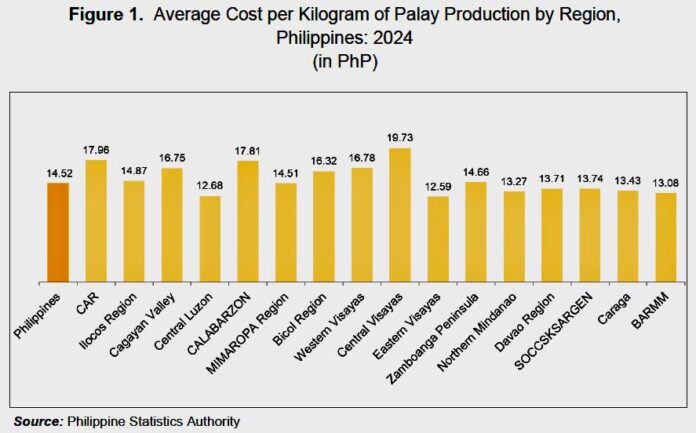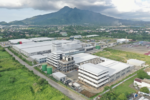The cost of producing palay—the unmilled form of rice, the Philippines’ national food staple—exposes deep regional disparities that mirror the effects of geography, infrastructure, and urban sprawl on the country’s agriculture.
New data from the Philippine Statistics Authority (PSA) paints a tale of two Visayas, with Central and Eastern regions landing on opposite ends of the national cost spectrum.
In 2024, Eastern Visayas—embracing the islands of Biliran, Leyte, and Samar—posted the country’s lowest average palay production cost at just P12.59 per kilo. Central Visayas, which includes urbanized provinces reliant on other industries and tourism like Cebu and Bohol, reported the highest at P19.73 per kilo.
The national average cost of palay production stood at P14.52 a kilo in 2024.
Central Luzon, which includes top rice-producing provinces like Nueva Ecija and Tarlac, had among the most efficient operations, with an average cost of P12.68 per kilo—making it the only other region aside from Eastern Visayas to fall below the P13 mark.
On a per-hectare basis, the average cost of producing palay nationwide was P59,695. Cagayan Valley had the highest at P78,245 per hectare, while Eastern Visayas again ranked lowest at P45,557.
Despite the cost disparities, net returns remain robust in some regions. Farmers in Central Luzon saw average profits of P58,932 per hectare, followed by Ilocos Region at P53,407.
The national average net return from palay production was P36,211 per hectare—a 60 percent gain over the average production cost. While the margins appear favorable on paper, these figures do not account for the sweat equity invested by farmers, nor the fact that each cropping cycle takes around four months from planting to harvest.
The contrast reflects how terrain, development pressure, and access to inputs can dramatically shape farmers’ bottom lines. The data make clear that palay farming is far from a level playing field—where one region’s advantage can be another’s constraint.
These disparities underscore the need for more area-specific strategies from policymakers, rather than a one-size-fits-all approach that risks leaving the most vulnerable producers behind.







